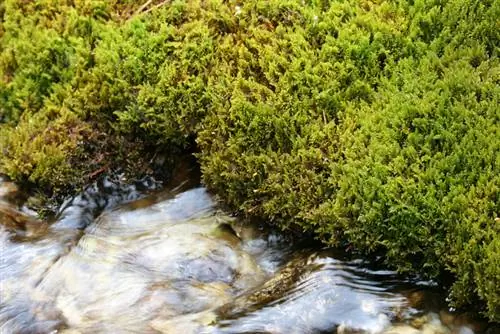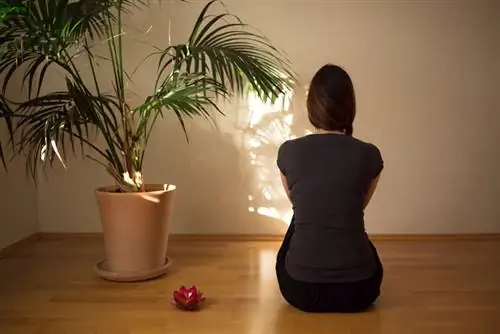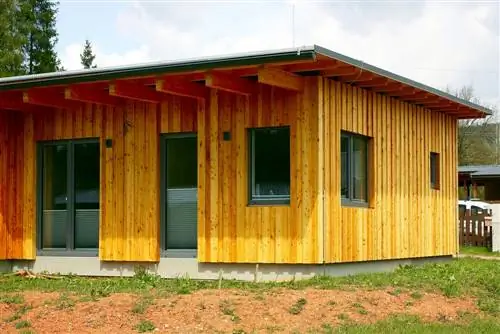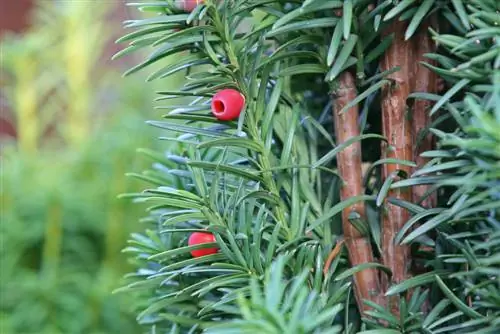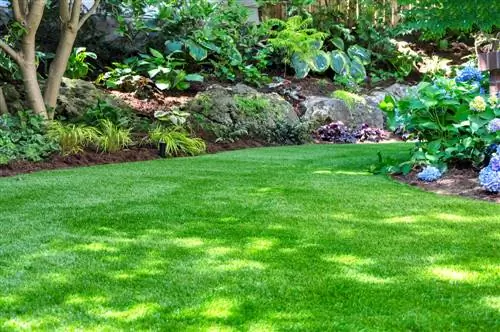- Author admin [email protected].
- Public 2023-12-16 16:46.
- Last modified 2025-01-23 11:20.
Moss is an excellent solution for adding decorative greenery to low-light locations. Problematic locations such as the terrarium and aquarium receive a velvety floor covering this way. Where majestic orchids cast large shadows, a shade-tolerant moss cushion lies fluffy and soft at their feet. You can read about which types of moss have emerged as problem solvers here.
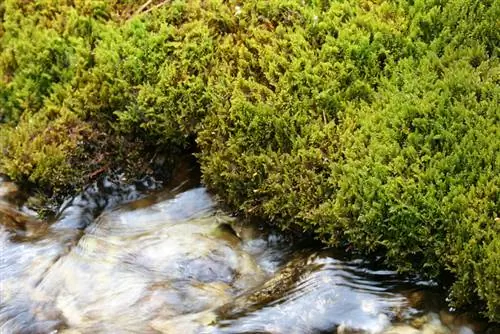
Which mosses are suitable for low light?
The following mosses are recommended for low-light locations: In the terrarium or orchid display cases, peat moss (Sphagnum), Widerton moss (Polytrichum commune) and swamp moss (Sphagnum palustre). In the aquarium, Java moss (Taxiphyllum barbieri), weeping willow moss (Vesicularia ferriei), Christmas moss (Vesicularia montagnei), coral moss (Riccardia chamedryfolia) and spring moss (Fontinalis antipyretica).
Mosses for low-light terrariums and orchid display cases
In the terrarium, moss makes an important contribution to the ideal living conditions for your amphibians. Where rare orchids are cultivated in the warm, humid climate of a display case, moss must not be avoided. The following types have proven themselves well in practice:
- Peat moss (Sphagnum) must not be taken from nature and is available from specialist retailers for little money
- Widerton moss (Polytrichum commune), can also be grown in shady garden locations
- Swamp moss (Sphagnum palustre) is suitable as a ground cover or as a base for mounted orchids
These mosses don't weaken in water in low light
Mosses are on the rise as a design element in aquariums. Not all species can cope with the low light conditions and a permanent life under water. The following selection introduces you to tried and tested mosses:
- Java moss (Taxiphyllum barbieri), the popular aquarium moss with delicate foliage
- Weeping willow moss (Vesicularia ferriei), ideal for tying to stones and branches under water
- Christmas moss (Vesicularia montagnei), with its tree-like shoots, quickly forms dense cushions on floors and walls
- Coral moss (Riccardia chamedryfolia), magnificent with dark green, coral-like shoots
- Spring moss (Fontinalis antipyretica), the reliable oxygen supplier that also thrives in places with little light
With the enchanting pond liver moss (Riccia fluitans), you have two design options available. The liverwort species not only thrives in water, but also looks decorative as a floating plant.
Tip
You can also use most of the mosses in this selection to create an atmospheric color in the room. Plant the moss on lean, acidic substrate in a glass mini greenhouse or elegant glass cylinder. Sprayed regularly with soft water in a shady location, the velvety cushion retains its rich green color for a long time.

